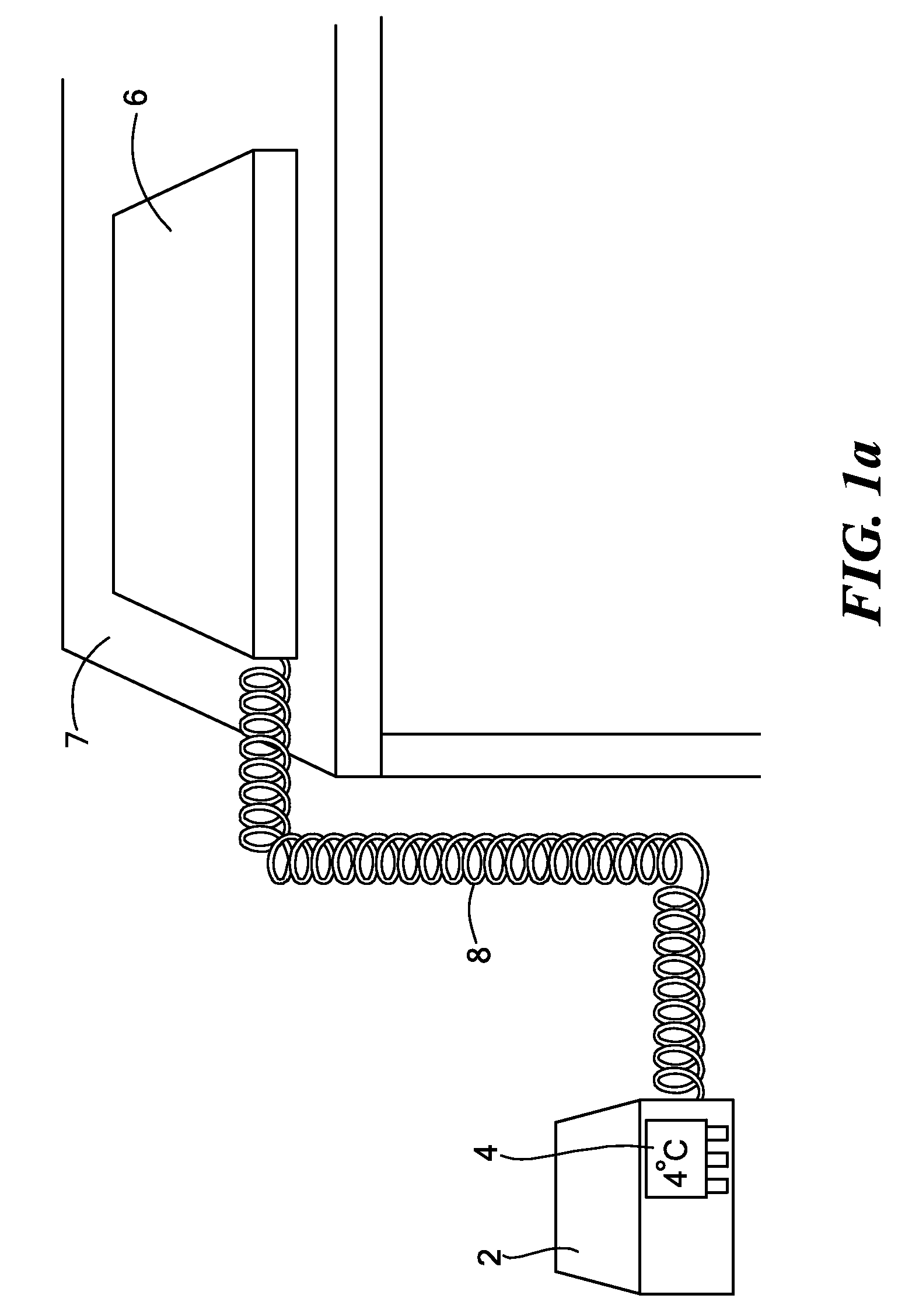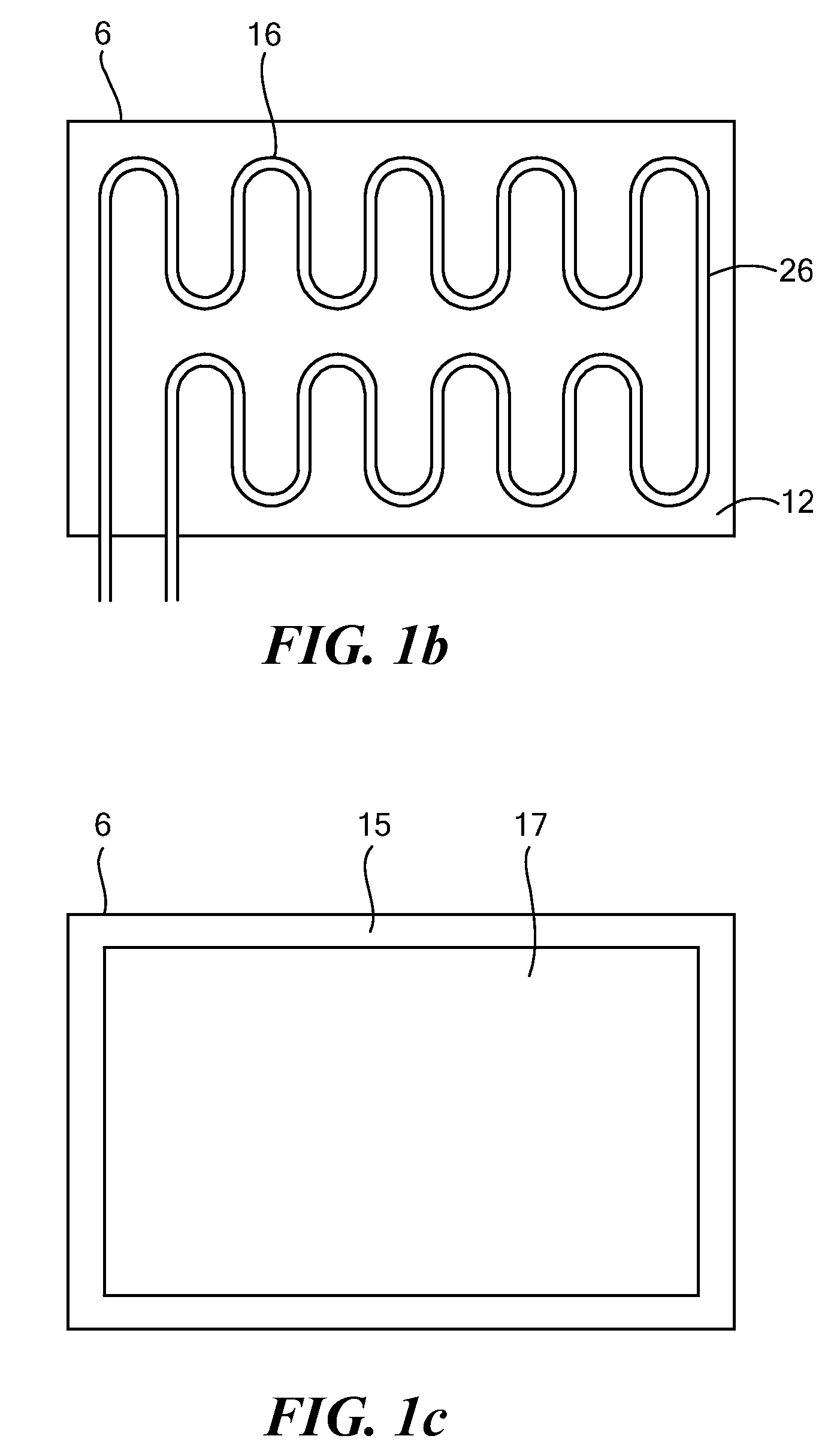Laboratory Temperature Control With Ultra-Smooth Heat Transfer Surfaces
a heat transfer surface and laboratory technology, applied in laboratory equipment, domestic applications, lighting and heating apparatus, etc., can solve the problems of increasing the temperature of the electrophoretic gel, limiting the voltage that can be applied, and excess heat affecting the electrophoretic separation, so as to reduce the emissivity of the surface
- Summary
- Abstract
- Description
- Claims
- Application Information
AI Technical Summary
Benefits of technology
Problems solved by technology
Method used
Image
Examples
Embodiment Construction
[0049] Definitions. As used in this description and the accompanying claims, the following terms shall have the meanings indicated, unless the context otherwise requires:
[0050]“Emissivity” shall mean a measure of the flux of thermal radiation of surface in air. Emissivity is expressed herein as a percentage of the theoretical maximum flux at room temperature.’
[0051] In accordance with an illustrative embodiment of the invention, a heat transfer surface is polished to create a low emissivity, that is, it radiates heat poorly. Accordingly, the surface may be cooled without undue use of energy and without causing an excess of condensation to collect on it. Adaptations may be included to ensure a uniform degree of cooling across the surface. The surface may be incorporated into a programmably temperature controlled system. By using such a system to control the temperature and placing an object on the surface, the object can be heated, cooled, or held at a given temperature. One or more...
PUM
 Login to View More
Login to View More Abstract
Description
Claims
Application Information
 Login to View More
Login to View More - R&D
- Intellectual Property
- Life Sciences
- Materials
- Tech Scout
- Unparalleled Data Quality
- Higher Quality Content
- 60% Fewer Hallucinations
Browse by: Latest US Patents, China's latest patents, Technical Efficacy Thesaurus, Application Domain, Technology Topic, Popular Technical Reports.
© 2025 PatSnap. All rights reserved.Legal|Privacy policy|Modern Slavery Act Transparency Statement|Sitemap|About US| Contact US: help@patsnap.com



